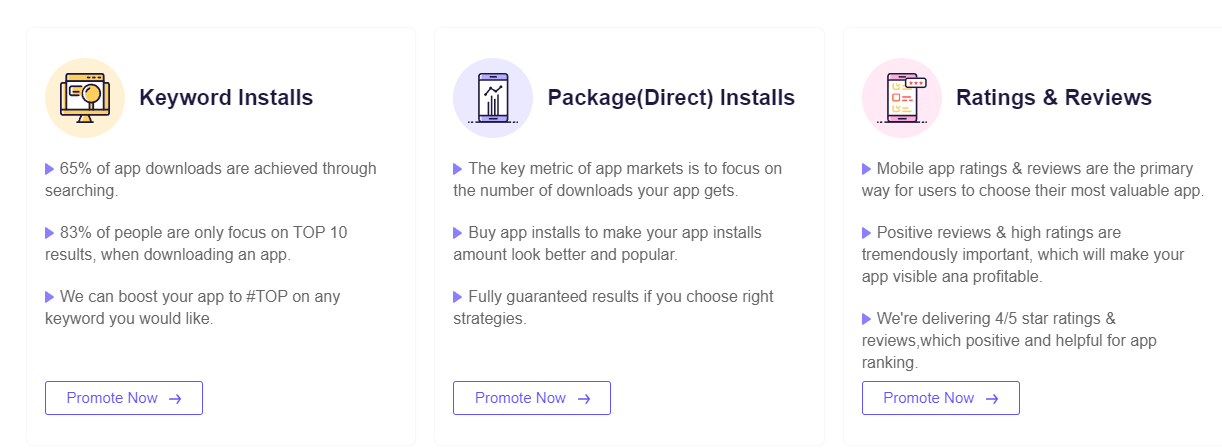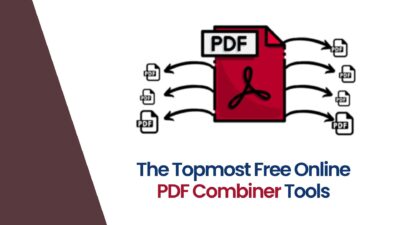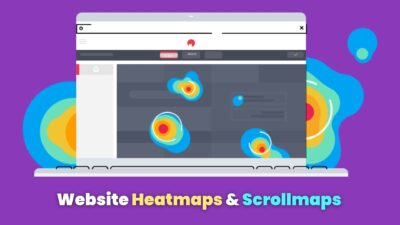Whether you are new to App Store Optimization (ASO) or simply keen to refine your approach to ASO, this post shares the simple steps with practical insights that have proven to maximize app store success. In Q1 2021, there were 3.48 million apps available for Android users on Google Play — and Apple App Store has approximately 2.22 million apps in place for iOS users.
The dilemma marketing teams face today is not whether to invest in apps to engage with their audience but how they can enable people to discover their apps in the first place. This is where App Store Optimization (ASO) is so important. Launching your app — in the Apple App Store & the Google Play Store — can help you reach a wider audience and get more downloads.
However, you cannot simply copy and paste your app listing from one platform to another. These listings contain various fields, and the algorithms use the information to determine search result ranking. To maximize CTR and conversions, you must first understand the key differences between the two platforms. Both Apple and Google rank apps and display results differently.
Therefore, you must adjust your app store optimization (ASO) strategy for each to gain visibility and increase downloads. Understanding how app store algorithms work is the first step in developing an effective App Store Optimization (ASO) strategy.
How Android App Store And Apple App Store Algorithms Function
First, App Store Optimization (ASO) is similar to the normal web-based business SEO (Search Engine Optimization) to increase traffic, sales, and rankings. Only that, in this case, it applies to app stores. Secondly, it’s about optimizing an app listing in the Apple or Google Stores to appear near the top of relevant search results, increasing visibility and driving conversations.
On the one hand, Google Play Store offers a unified marketplace to enjoy millions of the latest Android apps, games, music, movies, TV, books, magazines, and more anytime, anywhere, across your devices. On the other hand, the Apple App Store gives people worldwide a safe and trusted place to discover apps that meet our high privacy, security, and content standards.
Unlike Android, the Apple App Store has been a safe and trusted place to discover and download apps for over a decade. But the App Store is more than just a storefront — it’s an innovative destination with amazing experiences. And a big part of those experiences is ensuring that the apps they offer are held to the highest privacy, security, and content standards.
Markedly, Apple Store offers nearly two million apps — and they want you to feel good about using every single one. You can explore in-app events like movie premieres, gaming competitions, and livestreams. Discover amazing apps with a rich search experience — without worrying about inappropriate content. Every day, moderators review apps for quality and accuracy.
Understanding What App Store Optimization (ASO) Is All About
Other names like App Store Marketing and Mobile App SEO are known as App Store Optimization. App Store Optimization (ASO) is fundamentally about improving the visibility of your apps inside an app store’s search engine, such as Google Play or Apple App Store. By increasing impressions, you can support other goals, such as traffic to your online app and downloads.
The focus of App Store Optimization (ASO) is expert resource applications related to improving the ranking of mobile applications (apps) directly within app stores (like iTunes, Google Play, and Windows Store). The main apps help power up iPhone/iPad, Android, and Windows Mobile Phones. The ASO goal is nearly always app downloads, but other goals exist.
Some supplemental goals are:
- Increased brand exposure
- Positive app reviews and ratings
- More frequent and increased volumes of app reviews
- Target audience and potential customers engagement
- Additional marketing channel diversification
It’s important to realize that optimizing your app’s visibility is constantly evolving and ongoing, just like SEO for website businesses. Thus, when you build an app, your goal is to drive traffic. With a commitment to ASO, consistently tracking and measuring performance and results, you can stand out in the App Store and Play Store, where your reach is limitless.
Generally speaking, the app store ranking algorithms use various signals to determine how relevant an app is to each search inquiry: On-metadata ASO and off-metadata ASO influence app store rankings. Textual fields (such as app title, subtitle, or description) and visual assets (such as app store screenshots and videos) are examples of on-metadata factors.
For instance, you can easily and quickly edit the metadata options in Apple App Store Connect or Google Play Console. Meanwhile, you have no control over off-metadata factors because they are determined by how the market and users react to your app. Install volume and speed, average ratings, reviews, backlinks, and user engagement are among these factors.
Why Organic App Store Optimization (ASO) Is Your Strategy Foundation
The key ingredient missing from many ASO marketing delivery approaches is organic search optimization and integration of app stores within the broader organic marketing mix. There is more overlap between ASO and SEO than direct competition. The integration of these areas, and the application of consistent focus on ASO, can support numerous search marketing gains.
If you are new to ASO, it may be a more familiar approach to your business’s online marketing than initially thought. There are quite a few overlaps in approach between traditional Search Engine Optimization (SEO) and ASO – something we’ll cover in more detail in the next section. When you think about it, it makes sense that App stores are, in effect, now more than ever.
More so, acting as a closed-site search engine, which in turn relies on features like easy content (app content) discovery, indexation, plus app ranking algorithms tied to various elements (such as perceived app quality, freshness, business app visibility, brand awareness scale, User Experience (UX), consumer value signals like reviews, ratings, engagement, and the like).
Sound familiar? It should! These factors are all important organic search ranking signals, too. Marketing experts focusing on generating increased ROI from app stores primarily target key performance indicators of increasing application visibility.
Factors like;
- Ranking
- Impressions
- Shares
- Engagement (reviews/ratings)
- Downloads
The biggest marketing mistake, however, when it comes to integrating SEO and ASO is overlooking the role of the website in driving volumes of referral visits directly to your store page and app downloads section. Your website should be the driving force behind leading people throughout the information-seeking and buying funnel from your main online entity.
In that case (your website), through to an engaged, ready-to-buy/download audience (your app store). As content levels are limited within the app stores, the more you can leverage your website content to increase app awareness and discovery to build external app authority and visibility, the greater the wider value, traffic, and downloads your app will receive.
The Simple Steps Plus Best Practices For App Store Optimization (ASO)
Several specific optimization areas within app stores, including Google Play and other app promotion platforms, can be targeted for updates, refinement, and ongoing optimization. Most app downloads are directly attributed to app stores, so you cannot overestimate the value of in-app store maximization. Wants to know how to justify your ASO investment value?
Generally, app store users and app downloads are growing fast! In case you are wondering what categories have the most traction in app stores, the top 5 most popular Apple App Store categories in March 2021 were listed in the marketplace for you to gather a few ideas. According to Statista.com, the number of mobile app downloads worldwide has continued to grow.
Perse, the percentages outside the top 5 categories are closely grouped between 2% and 4% (travel, food/drink, health/fitness, etc.). Conversely, the only exception to this close-grouped trend is entertainment, which has 5.72% of popularity.
They are as follows:
- Games (21.53%).
- Business (10.11%).
- Education (8.67%).
- Lifestyle (8.62%).
- Utilities (6.24%).
You may be surprised to discover that many traditional search engine optimization tactics that work for search engine performance, such as Google and Bing, can also be directly applied to ASO.
Examples of this include:
- App name, title, and URL optimization.
- Keyword research for ASO.
- App rating and reviews generation and handling.
- Deep linking within mobile apps.
- Indexation of Apps in Google SERPS (search engine results pages).
- Click-through rate (CTR) optimization.
While keeping in mind that it is also a useful process to ensure your app remains fit for purpose and supportive of positive reviews and open feedback loops with your audience. But app store features and available fields will vary from business to business. That said, the following are the core optimization items you must focus on and improve on for great results.
1. Come Up With A Great Brand Application Name
Both the Apple App Store and the Google Play Store have a 30-character limit for app names and regard the keywords used in the field as a strong ranking signal. To get more clicks, consider how the app title appears in search results in addition to incorporating the most relevant search terms. Remember, Google Play Store search results only show a listing’s title and icon.
Thus, your app title should be descriptive to attract the right people. Meanwhile, search results on the Apple App Store include the app name, icon, subtitle, and screenshots to provide more content and context about an app. As a result, you can be more creative with the app title to attract attention and use the subtitle to explain what your app does.
Ensure they reflect the core keywords describing your app and reinforcing value, differentiation, and other perceived value signals. These areas must reflect the highest-value keywords and user search behavior. Also, note that character restrictions are in place for areas such as app title (name), and be cautious about potentially implementing low-quality or spam tactics.
For example, keyword stuffing is quite easy for algorithms to identify, demote or penalize, so it should be avoided. If in doubt, speak with an expert, or add this combination of terms to speak to the user and reflect on their search habits.
2. Explain Your App Features In Detailed Explanation
While the long description in both the App Store and Google Play aims to explain your app’s features and benefits, they work very differently for ASO. Because Apple does not use long descriptions as a ranking factor, you do not need to include as many keywords as possible in the copy. Instead, use it as a marketing tool to build connections and increase engagement.
In addition, it can also help you to drive downloads by writing creative copy that resonates with your core customers. Keywords in the long description, on the other hand, are a ranking factor in Android apps. As a result, you should adhere to SEO best practices and aim for a keyword density of 2-3% in the 4,000-character field for your top keywords.
But remember that keyword stuffing can lead to your listing being rejected or suspended by Google Play, so don’t overdo it. Apps have a 100-character keywords field in the Apple App Store, where you can include the most relevant search terms to help the algorithm index your listing and determine how to rank your app. These keywords are not visible to users.
But they are an important ranking factor in Apple’s ASO. Google Play, on the other hand, does not have a keywords field. To determine the app’s ranking, the algorithm considers keywords and keyword density in the app title, short description, and long description. After all, Google has the world’s largest search engine!
3. Consider Subtitle (Apple) Or Short Description (Google)
The subtitle in the App Store and the short description in the Google Play Store both serve the same purpose: to inform users about your app. The algorithms use the content in this field to index your app against various search terms.
So, the keywords you use will impact your app’s ranking. The similarity, however, ends here. In the App Store, the subtitle field is limited to 30 characters, and the copy appears alongside the app name and screenshots in search results. Meanwhile, you can use up to 80 characters in Google Play, but the short description does not appear in search results.
Users will only see it if they navigate to the app listing. So, how do you deal with these variations in character count and content placement? Your App Store subtitle should distinguish your brand from competitors and entice users to click through to the product page. Your short description for Android should include a Call To Action (CTA) that’s responsively attractive.
This will encourage users to download your app. Because Google ranks apps based on keyword density, repeating the top keywords in the app title and short description can help you rank higher.
4. Utilize Target Keywords & Use Various Graphics
App stores use keyword triggers in your app name, title, description, and associated fields. So, to get the best results during your App Store Optimization (ASO) process, you can consider using an array of keyword research tools to help you get the best focus terms. Not forgetting, you should also revisit them regularly for more optimization opportunities.
These are imperative to get right and to update to show the latest and changing user search queries. In most cases, traditional keyword research is required to optimize this. Ensure you take time to gather a comprehensive data set and put in place measures to review, refine and improve this and the other key items in an iterative way (likely monthly).
Thumbnail images and screenshots used to promote your app in app stores will directly impact the Click-Through Rate (CTR) of your web-based business app impressions compared to clicks to extra app pages. Users can search the apps installed on their mobile phones using the app store. Also, remember that you can even enable Apple’s Spotlight Search.
5. Monitor App Downloads, Consumer Ratings & Reviews
As you would expect, the more downloads your app receives, the higher the perceived buzz, demand, and user value associated with the app. Increasing the volume of downloads will support increased prominence within the app store’s organic ranking. Integrating your marketing channels outside the app store to drive people to the app is very important.
Just as it is to maximize the in-app performance, the better you can combine marketing channels and track their interactions, the greater your ability to impact them. As a result, you will also be in a better position to impact the overall app usage and engagement levels — because your target customers will be exposed to your app more frequently.
These are core user trust areas and a ranking signal for app stores. Volume, freshness, and rating all matter. You will need a framework for generating regular reviews, replying, and engaging with reviews. Front-line staff can provide a wealth of value in this area, and having some form of staff training and incentivization can help motivate and empower your team.
Especially to be proactive and consistent in gathering positive volumes of app reviews. Realistically, the top-performing apps in app stores are ever-evolving (reflecting user feedback, technology changes, feature additions, and improvements). They are also those apps that are constantly changing, evolving, and reflecting the feedback and requirements of the audience.
6. Embrace A Collection Of New Cloud Technology Mix
Both web-based and app-based technology is growing exponentially, and organizations must be technologically enabled to be in the game. Talking about ‘technology’ means creating solutions that are ‘faster, ‘convenient,’ and ‘qualitative.’ Human resources must be fully equipped to adapt to the highly demanding technological app dynamics.
Especially with the contemporaneous developments of this industry — but there is also a dire need for highly standardized processes to deliver top-class results. That’s when the need for Great DevOps Model In App Development emerges. Right from the planning through delivery, the idea of introducing DevOps is to maintain the quality streak of the app platform.
In particular, by a systematic collaboration of development and automation across the continuous delivery and continuous Integration. To simplify it, there must be a convenient way to tackle complicated scenarios without delays and for on-time delivery. Hence, introducing continuous integration tools makes it easier for developers to streamline their processes.
7. Apple App Previews Or Promotional Google Videos
While both Apple and Google permit videos in their listings, you must adhere to their guidelines and formats. The first preview video you add to your App Store app page will appear in search results and autoplay on mute, attracting users to click through to your listing. These videos must be optimized for 30-second autoplay and show the app’s user flow.
Furthermore, Apple does not permit promotional content. Promo videos in the Google Play Store are YouTube videos that have been added to an app listing and that automatically play in search results for branded searches. There can only be one video per listing, and it must be in landscape mode. Google gives video content more leeway.
It can be descriptive or promotional, but monetization must be disabled. The number of backlinks to your app page is used as a ranking signal by Google Play Store to determine the app’s authority. More backlinks from reputable sources can help you rank higher, similar to how SEO works. But backlinks are not used as a ranking signal in the Apple App Store.
However, promoting your app through multiple channels to drive high-quality traffic is still a good strategy for increasing downloads and getting positive feedback, which will help improve your ASO.
8. Continue Building & Updating Your Application
It must be remembered that app store optimization continues to outperform growth trends. Over the past few years, the necessity and value of apps within the marketing mix have been cemented as a key marketing tactic. The initial challenge now is how to get apps discovered by users organically within the major app stores. Continuous app building is the key.
Be that as it may, Jenkins is a known and the most common Continuous Integration Tool available today. Based on various comparisons, Jenkins tops the list — it is an open-source continuous Integration server-based application that allows developers to build, automate and test any software project faster. Thus, it’s a great starting point for newcomer developers.
On the same note, updating your app at regular intervals can bring added relevance for your product to your audience. App refinement and improvement can enable your brand to react to audience needs and competition changes. Both the Apple App Store and the Google Play Store take into account the regularity of app updates as part of the ranking algorithm.
This means that the more your brand is dedicated to progressing your app product offering, the greater your likely app ranking and in-store performance will be. Overall, apps that get updated more frequently tend to derive more positive and more frequent reviews. They also provide iterative ways to update, engage with, and service your company community.
Takeaway Notes:
The top-performing apps in app stores are ever-evolving (reflecting user feedback, technology changes, feature additions, and improvements). They are also those apps that are constantly changing, evolving, and reflecting the feedback and requirements of the audience. Apps updated more frequently tend to derive more positive and more frequent reviews.
They also provide iterative ways to update, engage with, and service your company community. Updating your app regularly can bring added relevance for your product to your audience and enable your brand to react to audience needs and competition changes with app refinement and improvement. Both the Apple App Store and the Google Play Store are seamless.
Resource Reference: Top #7 Tools To Develop UI Designs For Responsive Mobile Applications
One thing is for sure; they take into account the regularity of app updates as part of the ranking algorithm. This means that the more your brand is dedicated to progressing your app product offering, the greater your likely app ranking and in-store performance will be. It is also useful to ensure your app remains fit for purpose and supports positive online reviews.
As well as open feedback loops with your audience. With that being said, what else do you think we can add to this guide to make it even more resourceful and useful to other readers like you? In that case, you can share your additional thoughts, suggestions, opinions, recommendations, or even contributions for our Free FAQs & Answers in our comments section.





